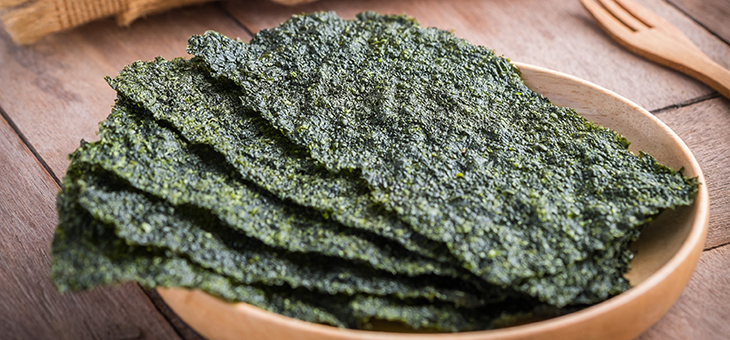The word ‘superfood’ sounds great. It evokes ideas of health and happiness, all in a small, edible package. And while it isn’t a scientifically defined term, we generally take it to mean an ingredient packed with good-for-you nutrients.
Eating so-called superfoods should come as part of a balanced diet – adding a few blueberries or leaves of kale to your plate isn’t the answer to all sins. But if you are looking to cram a few more nutrients in, these items are vying for their own superfood crown . . .
Seaweed
Leading dietitian Sophie Medlin says: “Seaweed is a great source of iodine, which we consume in lower quantities now as many people have switched to plant-based milks. Iodine is essential for thyroid function, and low dietary intake is associated with infertility.
“It is also a good source of fibre, antioxidants and other minerals,” Ms Medlin adds.
So, how can you get more seaweed into your diet? Ms Medlin recommends eating more sushi, “which uses dried sheets called nori”. Nori has a crunchy, umami flavour, and “can also be added to soups and stir-fries, and some people will add dried seaweed to their dishes as a seasoning in place of salt”.
Read more: What is umami?
Ferments
Home fermenting has seen a real boost during the pandemic. The process can be therapeutic, the results tasty – and it could be beneficial for your stomach, too.
“The process of fermentation introduces friendly bacteria into the food, which may improve the balance of bacteria that live throughout our gastrointestinal tract,” Ms Medlin explains. “While most of the bacteria in fermented foods might get killed off by our stomach acid, they may support the microbiome that is in our mouths and throats, and those that do make it to our colon alive, may support a healthier ecosystem down there too.”
Read more: Affordable everyday ‘superfoods’
Sourdough has already had its time in the sun, and we’re likely to see more experimentation with dishes involving kimchi or tempeh, and drinks such as kefir and kombucha.
The brilliant thing is that it’s very simple to ferment foods at home – all you need are some sterilised jars, vegetables, muslin, baking parchment and a bit of patience.
All vegetables are covered in the good bacteria lactobacillus, and when you slice up, grate and squeeze them with salt, they release their juice, which mingles with the salt to create a brine. Once contained within this briny environment, lactobacillus multiplies and begins to break down the ingredient, digesting the natural sugars and transforming them into lactic acid, which creates the tangy flavour and a sour environment that keeps the growth of nasty bacteria at bay.
Fibre
Fibre isn’t a single superfood – but a whole group of them. “Fibre has taken a back seat over the past few years as low carb and keto diets took hold and people started cutting out all wholegrains and many fruit and vegetables,” says Ms Medlin. She suggests the tides are turning. “As a gut health dietitian, I am delighted to see more interest in fibre and companies focusing on creating high fibre products.
Read more: Easy ways to hit your recommended fibre intake
“Fibre is excellent for reducing our appetite by keeping us full, stabilising our blood sugars and supporting our gut health by providing food for the friendly bacteria in our colon. What’s not to like?”
You don’t suddenly start having to invest in expensive ingredients only available from niche health-food stores. Ms Medlin recommends “adding seeds and nuts to dishes, and ensuring you have plenty of fruit and veg in your diet”.
Do you include these three superfoods in your diet? What do you think of the superfood trend?
– With PA
If you enjoy our content, don’t keep it to yourself. Share our free eNews with your friends and encourage them to sign up.

